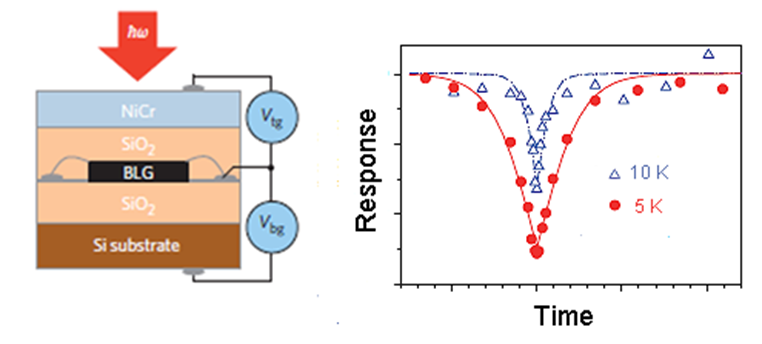Detection of long-wavelength light is central to security and military applications, and widely used in chemical analysis. Available detectors, based upon inorganic materials, have limited sensitivity and working speeds. Graphene is a unique material with strong, nearly wavelength-independent interaction with light.

Graphene detector schematic (left) and response vs. time delay in a pump – probe experiment shows subnanosecond response times.
The very weak “coupling” between electron and atomic motion in graphene suggests that “hot electrons” created by incident light can provide the basis for a fast and sensitive photon detector. Maryland MRSEC researchers have demonstrated such a detector using bilayer graphene in a “dual-gated” structure. This new “bolometer” has ultralow noise, besting existing detectors in sensitivity (at 5K) and raising speeds to >1 GHz ( at 10K).
This graphene bolometer is especially useful for detecting submillimeter light, giving it a bright future for photonics. For further information see DOI: 10.1038/NNANO.2012.88